Though the house at Sledmere may have been finished, the work of landscaping continued. An undated design, probably from the mid-1750s, shows Richard to have contemplated the creation of an oval carriage drive in front of the house, between it and the Fish Pond, with planting to the west of the house to include a formal ride up to a garden temple. 51 This work was never carried out, but in January, 1756, he wrote to Lord Robert Manners sending his ‘best respects to my Lord James and thank him for his kind wishes of the Improvement and Increase of my Nursery. I have been planting and transplanting for these six weeks past the Season, for that business has turned out very favourable and my trees come forward and grow almost beyond all imaginary expectations and great pleasure when I view them.’ 52
He also had a thriving kitchen garden of which he was especially proud. Back in December, 1752, he had written to Richard Lawson, a broker friend in London, asking for advice on buying a glass house: ‘Not having acquaintance with any in or about London, I hope you will excuse the trouble in desiring you to recommend one that will serve me with a Good Comodity. I have only got at present a few sash frames finished which gives me an opportunity of taking an Exact Measure of the Squares … & as they may be larger than Common I could like to have it of Crown Glass to be run or cast somewhat stronger and better if allowed a half penny a foot more than the usual price …’ 53 By August, 1760, he was able to write to his brother Joseph, ‘I perhaps may cut upwards of a hundred Pine Apples this year’ 54 and when he went on his annual trip to Harrogate to drink the waters, cargoes of nectarines, peaches, plums and melons followed him there. 55
With the house and gardens completed, Richard needed a new wife to share his good fortune, and on 1 November, 1757, he married for the second time. He had not had to look far, for his bride was his first cousin, Anna Maria Edge, the widow of a Hull merchant, Thomas Edge. She was described in a local newspaper as being ‘a Lady of the most distinguished merit, & blessed with every amiable qualification that can adorn her sex’. 56 She also had three children, Dicky, Bella and Kitty, to whom Richard appears to have been a most affectionate stepfather. ‘If at any time you should think my advice may be of Service,’ he told Kitty, ‘upon application I will give it to you honestly and sincerely to the best of my judgement, just the same as if you was my own Child.’ 57
Comfortably settled in his new home, Richard immersed himself in the life of a country squire. ‘Gentlemen from Hull hunted with me,’ ran his diary entry for 23 February, 1756, and on the subsequent days through until the 29th he wrote, ‘Ditto. Breakfasted, dined and suppd with me.’ 58 He hunted hares with a pack of harriers and frequently alluded to his runs in his letters. ‘My brother Parson and his wife came to see us the 11th of this month,’ he wrote to Bella Edge on 23 October, 1759, ‘and returned to Hull on the 21st. The day before they were a-Hunting in the Lawn with very great diversion. Killed and Eat four Brace of Hares and two Couple of Rabbits.’ 59 In December he told his niece Polly, ‘I have been able to mount my Hunter and ride a Chaise. Your Aunt and Kitty goes in the Coach a Hunting when the weather will permit. Once, twice or three times a week I accompany them therein to the field and back.’ 60
The daily entries in his pocket books show that scarcely a day went by without him entertaining somebody, either to lunch or dinner. If it wasn’t Parson Paul, then it was family or his tenants and neighbours. No doubt they relished their visits to Sledmere, for Richard was nothing if not a bon-vivant. They would have expected to find copious amounts of game on the table, such as hare, partridge and venison, but there were often surprises in store. In October, 1759, for example, he thanked his Danzig brother-in-law, Randolph Hobman, ‘for the kind present of the bagg of Sturgeon’, 61 while in December he received ‘a forequarter of very fine Lamb and some Oysters’ 62 from ‘Brother Parson Sykes’. The same year he wrote to Joseph Denison in London to thank him for the olives that had been sent and proved ‘very good and acceptable’, and to order 12lbs of chocolate. He sent bottled mushrooms and potted hare to his friends in London, but a gift of potted char sent to him by his brother Parson got left behind in Hull, his servant Bob ‘not knowing what it was’. 63
Your Melon was good
The Flesh red as blood
The flavour & juices how fine!
Here’s a health to ‘Squire Sykes’
Whom no man dislikes
I’ll drink it as oft as I dine.
wrote Parson Walmisley from Malton on 11 August, 1759. 64 He would have found no shortage of drink with which to charge his glass. The new Cellar contained ‘twenty-four New Hogsheads Iron Bound, seven half Ditto, ten Twenty Gallon casks, Eight Gantrys’ 65 and it was well stocked, for Port was not the only drink for which Richard had a fondness. In November, 1759, he wrote of having received fifty-nine dozen bottles of wine from Robert Norris, and in the following January told him ‘I have been inspecting into my Stock of Madeira and to oblige you I have sent you seven Doz. by my Market cart … and can spare you 5 Doz. more.’ 66 This was in addition to eight dozen bottles of ‘Old Hock’ which he had pledged to spare him from his cellar only a few days earlier, while February found him writing once more to Robert Norris, inquiring anxiously, ‘When do you draw off the Red Wine? I must have some fit to drink about next October.’ 67 For the chosen few there was a rare treat, the ‘water of life’:‘I got one Mr Richard Lawson, a Broker in London,’ he wrote to Joseph Denison in November, 1759, ‘to Buy me two or three bottles of Usquaba. The best of my remembrance he bought it of one Burdon, famous at that time, and having none Left desire you will buy me two Quart bottles of it, the best and send it by the first ship to Hull.’ 68 The good life that Richard was enjoying is reflected in his portrait, which he commissioned from Henry Pickering, an artist who liked to paint people ‘in character’. Richard was rich and successful, he had a delightful new house, and he now had an instant family. Childless himself, Richard had a warm and affectionate nature which reveals itself best in his relationship with two close members of his family, his half-brother Joseph and his favourite niece, Polly, portraits of whom hung in his dressing room.
Joseph Sykes was Richard’s junior by seventeen years and was the product of their father’s second marriage to Martha Donkin. Since he never really knew his father, who died in 1726 when he was only three, Joseph had always looked to his older brother for support. He worked in the family business and Richard thought so highly of him that in 1753, when Joseph had just turned thirty, he made him a partner. ‘I have turned over the Charge of the Counting House,’ he wrote to his brother-in-law, Randolph Hobman in August, 1753, ‘to my Brother … for I am mostly in the Country when in Health.’ 69 That summer Richard went to a lot of trouble to help smooth the path for his brother to get married to a Miss Dorothy ‘Dolly’ Twigge, against the express wishes of his mother. ‘I observe that Mr Jos. Sykes’, wrote the prospective bride’s father, Nicholas Twigge, in June, 1753, ‘has communicated to you what passed at his last visits betwixt him, myself and Dolly, the Substance of which was that he made an offer of himself of which I disapproved but my Daughter accepted … I always thought the consent of Parents and nearest relations necessary for the happiness of the young ones.’ 70 He did, however, go on to say that he believed ‘as do you, that their affections are mutually engaged and so engaged that if I was now to attempt to break the affair, I should be under the greatest fear for the consequences’. He finished by asking ‘In the meantime if Mrs Sykes has any particular reason why she would not have her son’s marriage to take place, I should be glad to know it …’
Читать дальше
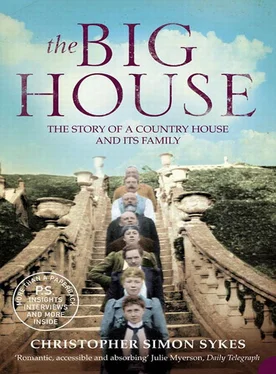
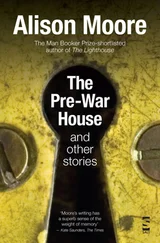



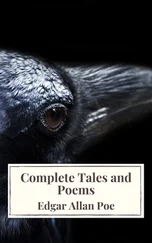

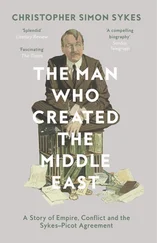

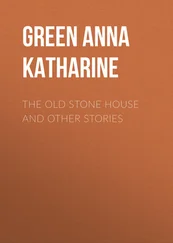
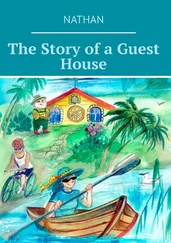

![Edward Ellis - Adrift on the Pacific - A Boys [sic] Story of the Sea and its Perils](/books/753342/edward-ellis-adrift-on-the-pacific-a-boys-sic-s-thumb.webp)